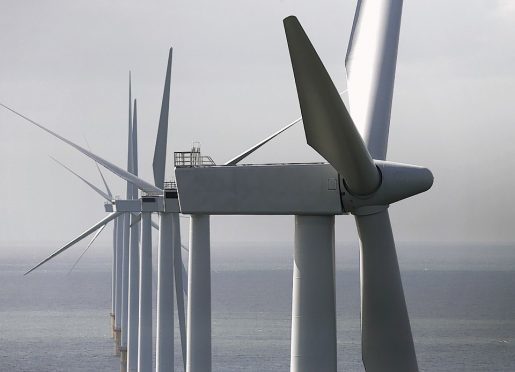A row has erupted after a new report claimed to prove that tourism has flourished in areas with windfarms.
Midlothian consultancy Biggar Economics has based its conclusion on a study of 18 Scottish windfarms – including five in the Highlands and Argyll.
It considered the number of people employed in tourism in surrounding areas before and after turbines appeared in the period 2009-2013.
It found some areas with the most growth in tourism jobs also saw the greatest rise in onshore wind installations. Scottish tourism jobs increased in that period by 10.8%.
Report author Graeme Blackett said it was important to identify if there were detrimental effects.
The study says there is “no relationship between the growth in the onshore wind sector and growth in the tourism sector.”
But its rounding up of figures to the nearest 100 and other methods within the report have been heavily criticised by windfarm objectors.
Mr Blackett maintains it is “the first independent study of its kind.”
Until now, only polls have been carried out to try to gauge public thinking about wind parks.
Tourism agency VisitScotland found in 2012 that 83% of respondents believed their decision to holiday in Scotland would not be affected by the presence of turbines.
In contrast, a two-year survey of guests staying at the Aigas wildlife holiday centre near Beauly found 80% feel a repeat visit would be less likely if a windfarm was visible.
Its general manager Warwick Lister-Kaye said: “The feedback also reveals that people believe turbines kill ospreys and sea eagles, and that the technology is inefficient because of its intermittency.”
Mr Blackett has represented the windfarm industry at public inquiries on numerous occasions as “an expert witness on socio-economic and tourism issues.”
The study found that Highland tourism employment increased 25.9% to 15,621 between 2009 and 2013 while the region’s onshore wind power generation doubled. Windfarm numbers rose from 15 to 33 and turbine numbers from 208 to 419.
Trade body Scottish Renewables spokeswoman Lindsay Roberts said the research “joins the growing body of evidence that clearly shows there is no negative impact on tourism from onshore wind.”
And a spokesman for VisitScotland said: “Our own research has found the vast majority of potential visitors are not discouraged from visiting Scotland on account of windfarm developments.”
Opponents of the industry questioned the report’s methods.
Linda Holt of Scotland Against Spin said: “If you’re highly selective in the statistics you use, you can make statistics prove anything.”
Highland campaigner Lyndsey Ward said: “It’s a survey that can be spun favourably by the wind industry but, in truth, isn’t worth more than a moment’s consideration seasoned with a pinch of fairy dust.”
Helen McDade of the John Muir Trust (JMT) said: “The study uses percentages a lot, rather than actual figures.
“A more accurate measure is to ask tourists and residents for a response.”
Dave Gordon of Mountaineering Scotland said: “The Biggar report doesn’t consider the nature of the tourism market.”
Mr Blackett said: “This research has been undertaken to the highest professional standards. The report considers tourism and windfarm development in Scotland as a whole and for every local authority area. Far from being selective, it is a comprehensive, robust analysis.”










